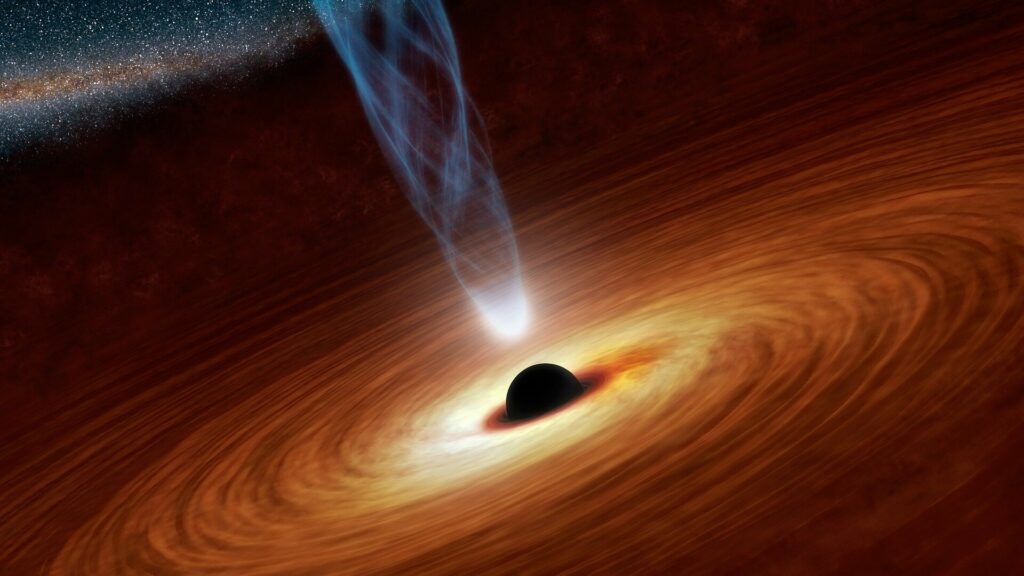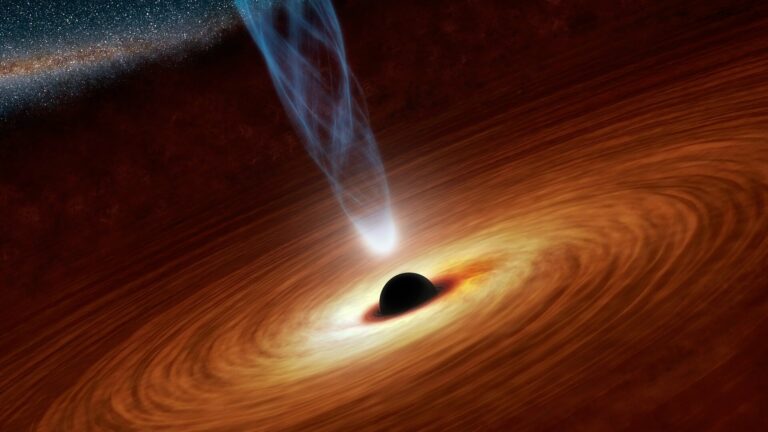Constraining Rotating Black Hole Dynamics Through the Gauge Symmetry Principle
In 2015, the LIGO/Virgo experiment, a comprehensive research initiative conducted at two observatories in the United States, achieved the groundbreaking feat of directly observing gravitational waves. This pivotal achievement has since spurred physicists globally to develop new theoretical frameworks for understanding the dynamics of black holes, drawing upon the wealth of data gathered by the LIGO/Virgo collaboration.
A team of researchers from Uppsala University, the University of Oxford, and Université de Mons recently embarked on an endeavor to elucidate the dynamics of Kerr black holes—black holes predicted by theory to rotate at a constant rate. They employed the theory of massive high-spin particles in their investigation. Their findings, detailed in a paper published in Physical Review Letters, specifically posit that the dynamics of these rotating black holes are governed by the principle of gauge symmetry. This principle suggests that certain alterations to the parameters of a physical system would result in no measurable effects.

“We sought a correlation between rotating Kerr black holes and massive higher-spin particles,” explained Henrik Johansson, a co-author of the paper, in an interview with Phys.org. “In simpler terms, we modeled the black hole as a spinning fundamental particle, similar to how the electron is treated in quantum electrodynamics.” The connection between Kerr black holes and higher-spin theory was initially explored in two separate papers published in 2019.
The first study was conducted by Alfredo Guevara at the Perimeter Institute for Theoretical Physics and his collaborators in Europe, while the second was led by Ming-Zhi Chung at National Taiwan University and colleagues at Seoul National University. Both of these earlier studies demonstrated that the well-known Kerr metric could be aligned with an infinite family of higher-spin scattering amplitudes. These amplitudes were initially derived by physicists Nima Arkani-Hamed, Tzu-Chen Huang, and Yu-tin Huang as part of a preceding study. “While these preceding results are remarkable, they are not yet sufficient for accurately describing Kerr black-hole dynamics in anticipation of upcoming experiments, such as the Einstein telescope, LISA, and the Cosmic Explorer,” stated Johansson. “
Some crucial missing information lies within the black-hole Compton scattering amplitude, currently unknown for general spin.” In their paper, Johansson and his colleagues propose that the principle of gauge symmetry could effectively constrain the dynamics of rotating black holes.
The researchers demonstrated that massive higher-spin gauge symmetry, informed by a mechanism outlined by Ernst Stueckelberg and later formalized by Yurii Zinoviev, can replicate the Kerr scattering amplitudes reported in previous papers. “We also demonstrated that the unknown Compton scattering amplitudes are severely constrained, even if achieving uniqueness requires further input,” added Johansson. “Higher-spin quantum field theories (QFTs) are known for their complexity. Even low-spin QFTs, such as the spin-1 case of the Standard Model and the spin-2 case of General Relativity, are complicated, relying fundamentally on gauge symmetry and diffeomorphism symmetry (general covariance). These two symmetries can be seen as the lowest two rungs on an infinite ladder called higher-spin gauge symmetry.”
While gauge symmetry is not mandatory for describing the dynamics of massive particles, it has proven to be a valuable tool for outlining consistent interactions. One realization of this massive gauge symmetry is the Higgs mechanism. “Utilizing massive higher-spin gauge symmetry for black holes allows us to ensure that the spin degrees of freedom are consistently treated, enabling us to write down an effective Lagrangian,” explained Johansson. “
The Lagrangian provides both the correct higher-spin description of a Kerr black hole and has a reasonably good high-energy behavior. While the latter is not crucial for classical black holes, it instills confidence that the effective theory might also describe certain quantum processes.” Johansson and his colleagues were pioneers in applying higher-spin gauge symmetry to black holes. The initial results of their calculations show promise and could pave the way for further investigations into this link. “While we anticipate that it will take some time before the full effective theory for rotating black holes is understood, we believe that higher-spin gauge symmetry will be a crucial component in its formulation, akin to how gauge symmetry and diffeomorphism symmetry guided the theoretical framework of 20th-century physics,” Johansson expressed. “
The complete Compton scattering amplitude for a Kerr black hole remains mysterious, but we are optimistic about fully constraining it in the future. This involves understanding it for arbitrary spin orders and to higher orders in Newton’s constant.” Fully constraining the scattering amplitude of Kerr black holes will ultimately necessitate close collaboration between theoretical physicists studying massive higher-spin particles and those tackling the Teukolsky equation rooted in general relativity theory. Recent collaborations between these diverse research communities indicate that progress in this direction could be on the horizon. “In our upcoming works, we also aim to further explore the connection between black holes and their quantum properties, reminiscent of elementary particles,” added Johansson.
This article is republished from PhysORG under a Creative Commons license. Read the original article.
Do not forget to share your opinion with us to provide you with the best posts !




0 Comments